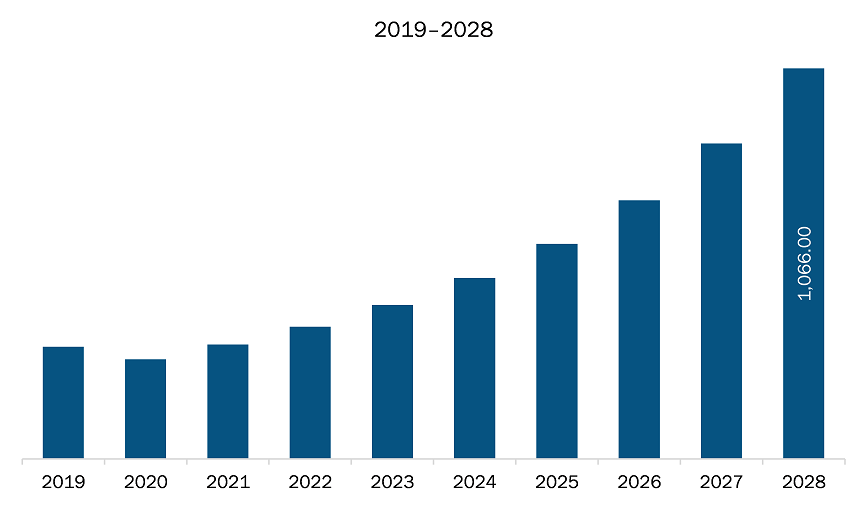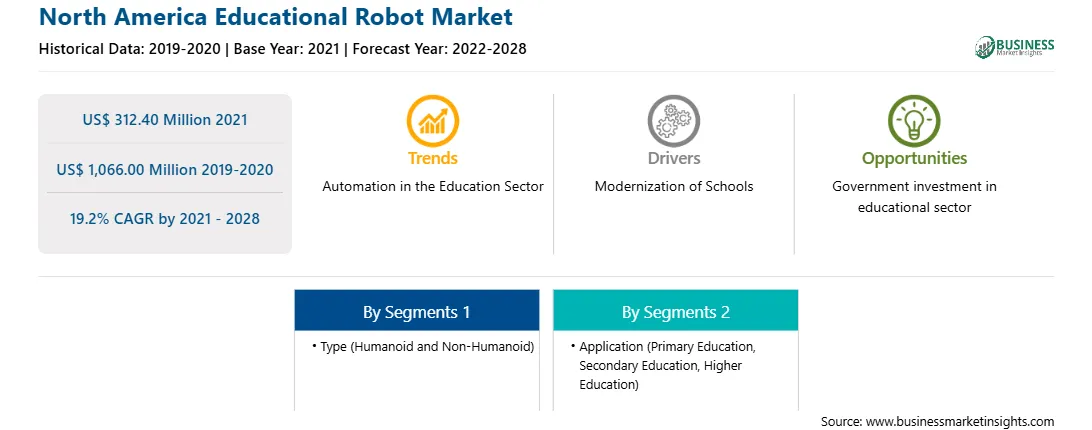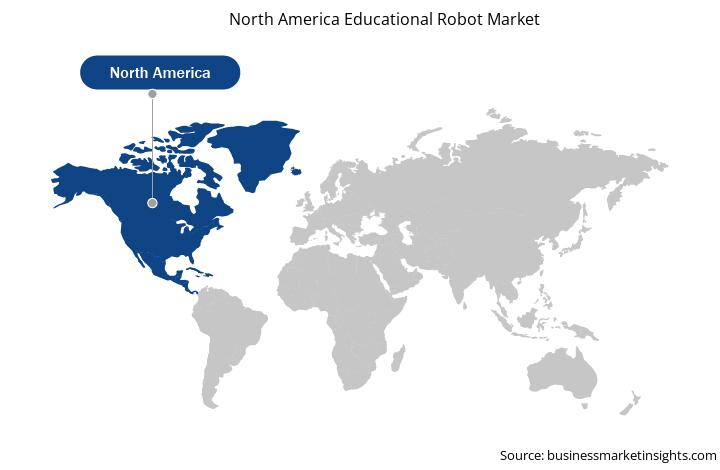North America comprises of the US, Canada, and Mexico. The US and Canada are developed countries in terms of modern technologies, the standard of living, infrastructure, etc., while Mexico is one of the world’s fastest developing economies with the presence of a significant middle-class population experiencing growth in their standard of living. In the US, educators have been encouraging the inclusion of STEM curriculum to address the next-gen of workers, including the development of the world’s next roboticists as well as artificial engineering experts. In the US, educators are constantly trying to include robots as well as robotic education in classrooms. However, robotics programs and curricula differ across school districts. STEM-based initiatives were introduced in the country almost 25 years back, since then several students have been taking part in STEM programs. However, there are several challenges, such as unequal opportunity to participate in these programs. For instance, most of the low-income schools depend on external funding to include such programs, thus lacking in introducing robots to their education system. Also, there are very few numbers of schools that have implemented robotics for every student throughout the academic year.
Presently, North America is the largest market in terms of revenue share of global educational robot market. The region is characterized by the presence of developed nations such as US and Canada, where the demand of education technology solutions & services is quite high owing to the huge presence of educational robot manufacturing companies, smart device manufacturers, cloud service providers, and high adoption of advanced technologies such as robots among schools and educational institutions. Education technology industry has been flourishing at an impressive pace in the US due to high adoption among end-users and growing investments and funding in start-ups. In terms of COVID-19 outbreak, US is the world’s worst affected country presently in terms of confirmed cases and number of deaths, as per latest WHO reports. However, with more and more schools and universities continuing to adopt distance learning through virtual classrooms and online exams & assessment tools, in the wake of ongoing pandemic and closure of schools across major North American countries. Moreover, the sudden shutdown of all economic activities across the region have also impacted the manufacturing of educational robots and have disrupted its supply chain. Hence, the COVID 19 outbreak has a negative impact on the growth across the region.

Strategic insights for the North America Educational Robot provides data-driven analysis of the industry landscape, including current trends, key players, and regional nuances. These insights offer actionable recommendations, enabling readers to differentiate themselves from competitors by identifying untapped segments or developing unique value propositions. Leveraging data analytics, these insights help industry players anticipate the market shifts, whether investors, manufacturers, or other stakeholders. A future-oriented perspective is essential, helping stakeholders anticipate market shifts and position themselves for long-term success in this dynamic region. Ultimately, effective strategic insights empower readers to make informed decisions that drive profitability and achieve their business objectives within the market.

| Report Attribute | Details |
|---|---|
| Market size in 2021 | US$ 312.40 Million |
| Market Size by 2028 | US$ 1,066.00 Million |
| CAGR (2021 - 2028) | 19.2% |
| Historical Data | 2019-2020 |
| Forecast period | 2022-2028 |
| Segments Covered |
By Type
|
| Regions and Countries Covered | North America
|
| Market leaders and key company profiles |
|
The geographic scope of the North America Educational Robot refers to the specific areas in which a business operates and competes. Understanding local distinctions, such as diverse consumer preferences (e.g., demand for specific plug types or battery backup durations), varying economic conditions, and regulatory environments, is crucial for tailoring strategies to specific markets. Businesses can expand their reach by identifying underserved areas or adapting their offerings to meet local demands. A clear market focus allows for more effective resource allocation, targeted marketing campaigns, and better positioning against local competitors, ultimately driving growth in those targeted areas.

The educational robot market in North America is expected to grow from US$ 312.40 million in 2021 to US$ 1,066.00 million by 2028; it is estimated to grow at a CAGR of 19.2% from 2021 to 2028. Increasing demand for robots for learning language, The humanoid robots are identical to the human features and interacts with social tools and the environment. Human-Robot-Interaction has gained considerable attention at research centers and educational institutes. The robots are not just powerful tool for STEM education but has also been used across various countries for developing communication skills among children as these robots can be integrated with various languages. With the innovative teaching methods and the increasing adoption of humanoid robots across the primary to higher education, vendors have a huge opportunity for humanoid robots during the forecast period. This is bolstering the growth of the educational robot market.
In terms of type, the non-humanoid segment accounted for the largest share of the North America educational robot market in 2020. In terms of application, the higher education segment held a larger market share of the educational robot market in 2020.
A few major primary and secondary sources referred to for preparing this report on the educational robot market in North America are company websites, annual reports, financial reports, national government documents, and statistical database, among others. Major companies listed in the report are Lego System A/S
The North America Educational Robot Market is valued at US$ 312.40 Million in 2021, it is projected to reach US$ 1,066.00 Million by 2028.
As per our report North America Educational Robot Market, the market size is valued at US$ 312.40 Million in 2021, projecting it to reach US$ 1,066.00 Million by 2028. This translates to a CAGR of approximately 19.2% during the forecast period.
The North America Educational Robot Market report typically cover these key segments-
The historic period, base year, and forecast period can vary slightly depending on the specific market research report. However, for the North America Educational Robot Market report:
The North America Educational Robot Market is populated by several key players, each contributing to its growth and innovation. Some of the major players include:
The North America Educational Robot Market report is valuable for diverse stakeholders, including:
Essentially, anyone involved in or considering involvement in the North America Educational Robot Market value chain can benefit from the information contained in a comprehensive market report.